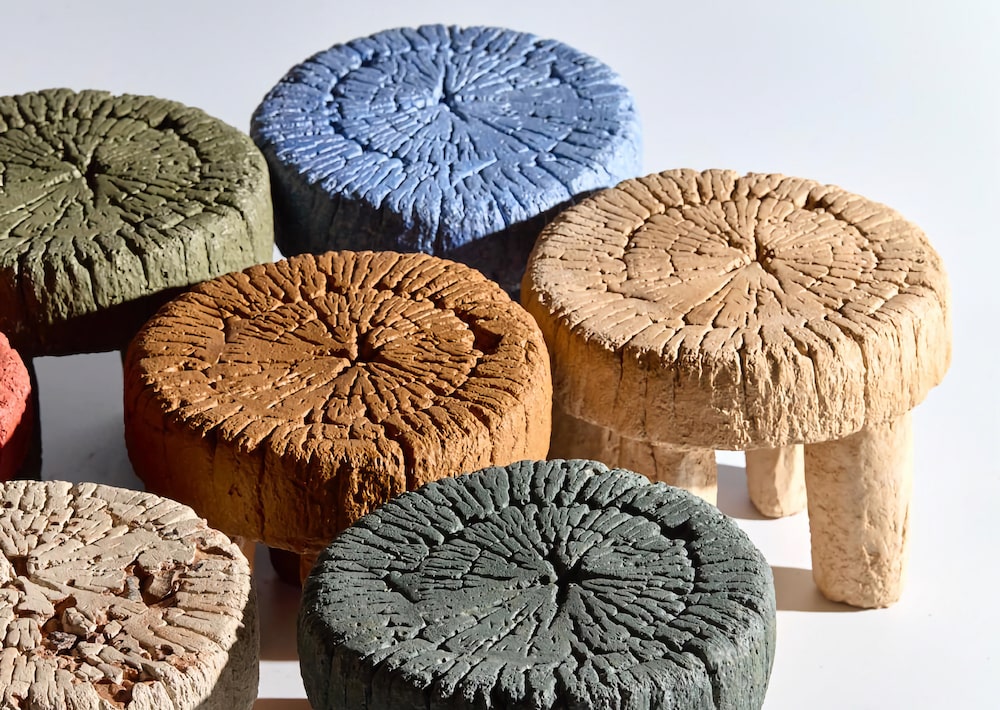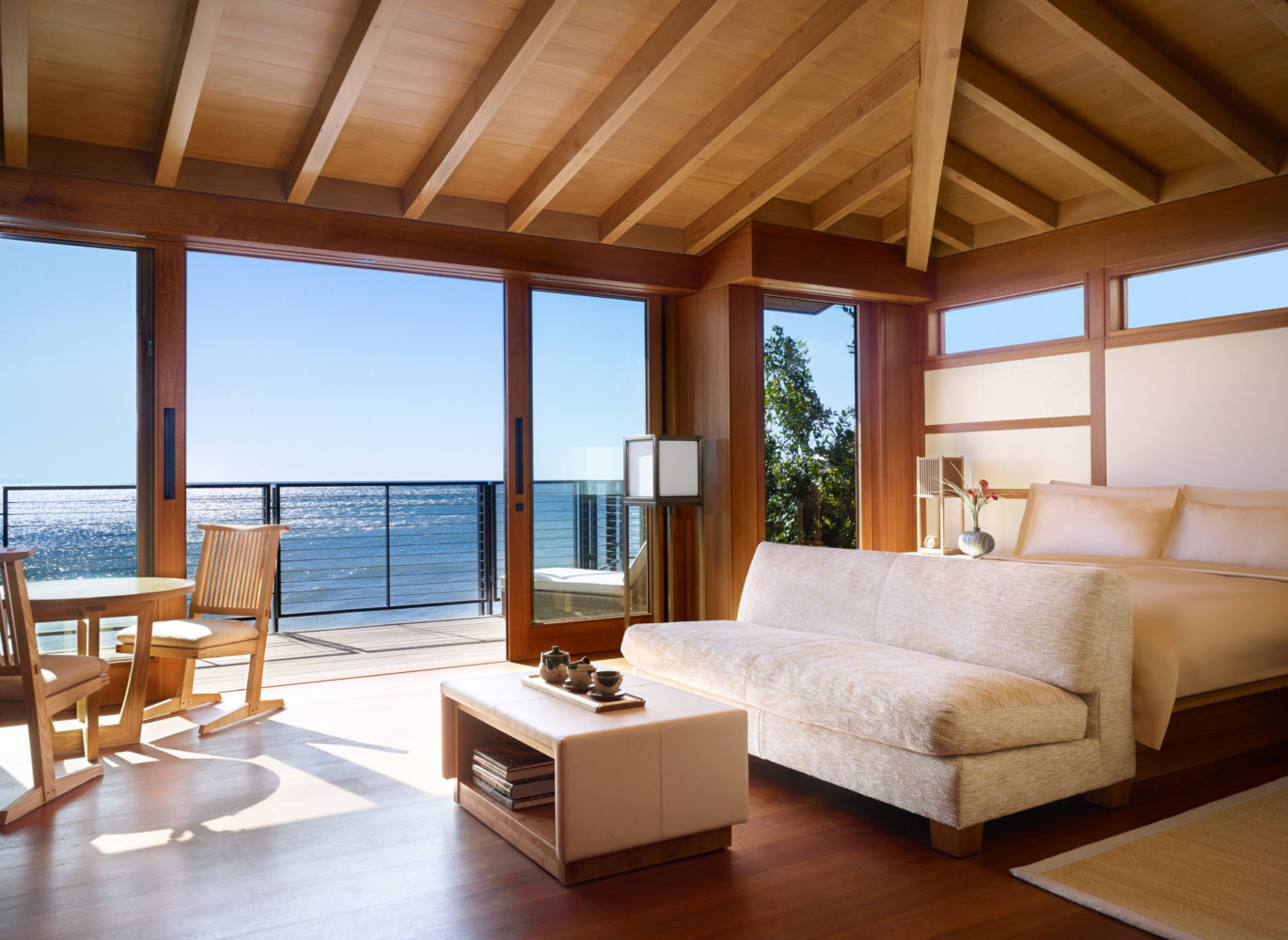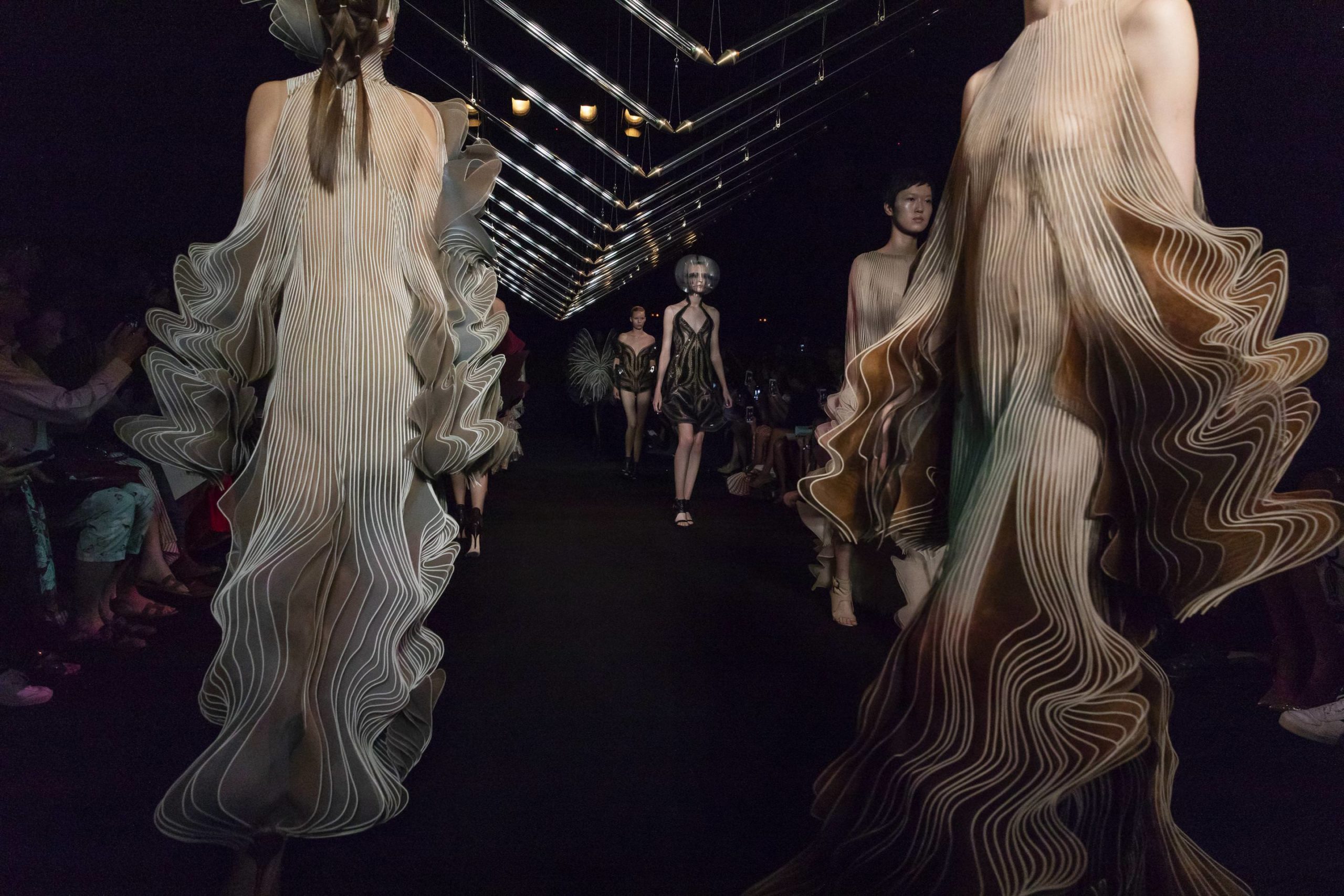The architect and designer Nina Edwards Anker knows that to get people to care about sustainability, all of the senses must be engaged. Through her firm nea studio, she has designed a sofa filled with lentils, lamps made of algae, a chandelier from seashells, and a home in Southampton, New York, that uses no gas or oil.
That house she has named Cocoon, and it was completed at the end of last summer. A southern-facing glass facade and colorful skylights complement a northward curved, shingle-covered exterior wall, following the passive house zero energy principles.
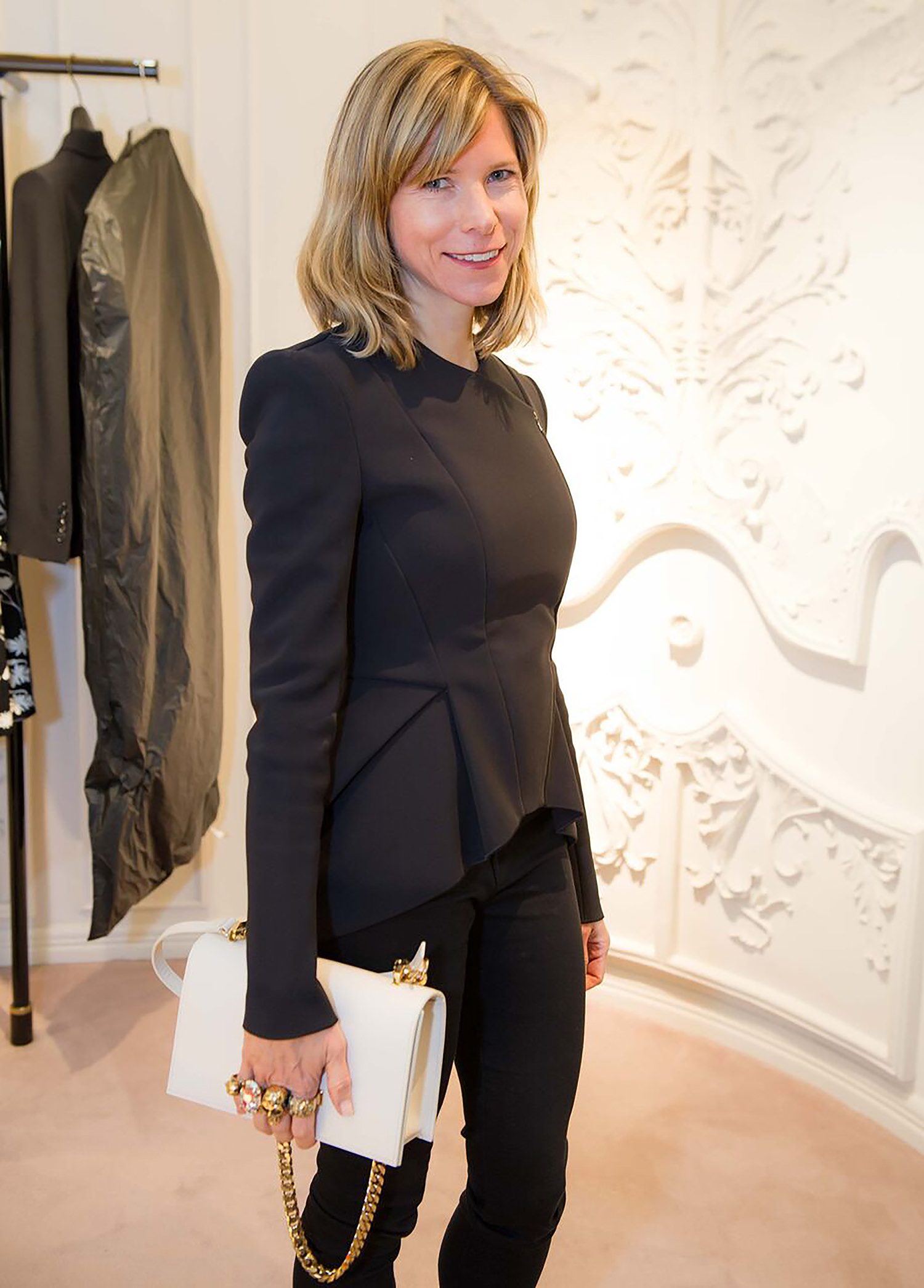
Nina Edwards Anker
Whitewall spoke with Anker about how she uses beauty to convince her clients to care about eco-design, and what it’s like to come home at night to a glowing home without having to lift a switch.
WHITEWALL: What is the starting for a project like Cocoon, your home in Southampton?
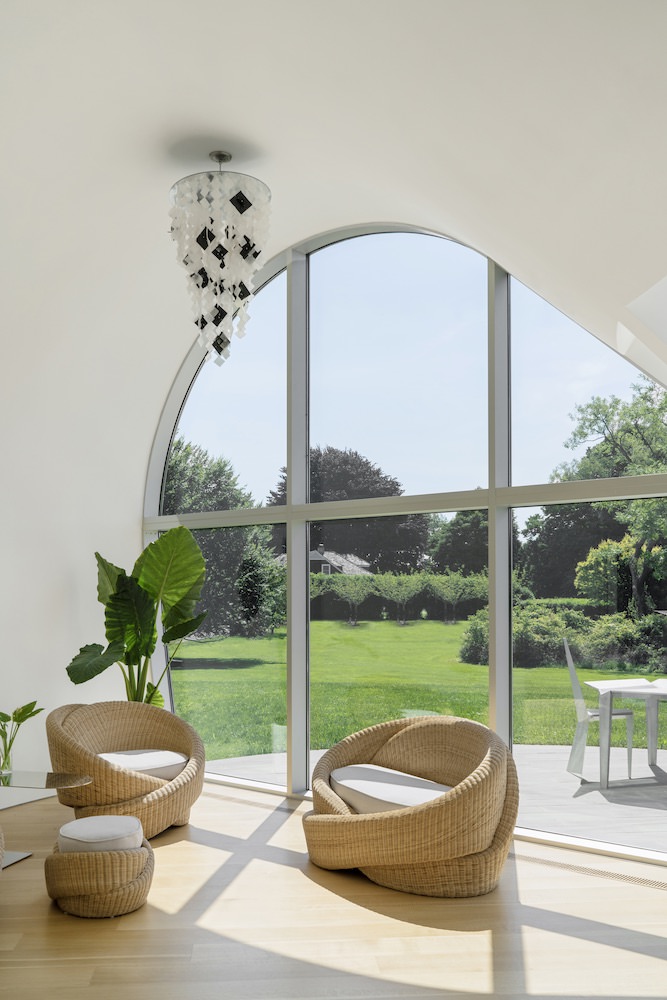
Courtesy of nea studio
NINA EDWARDS ANKER: It goes way back to when I started my PhD dissertation at the Oslo School of Architecture and Design.
I discovered that there were ways of using the glass in design that could enhance your experience of the space. That’s where it started. The entire house is powered on solar energy; there is no gas or oil in the house.
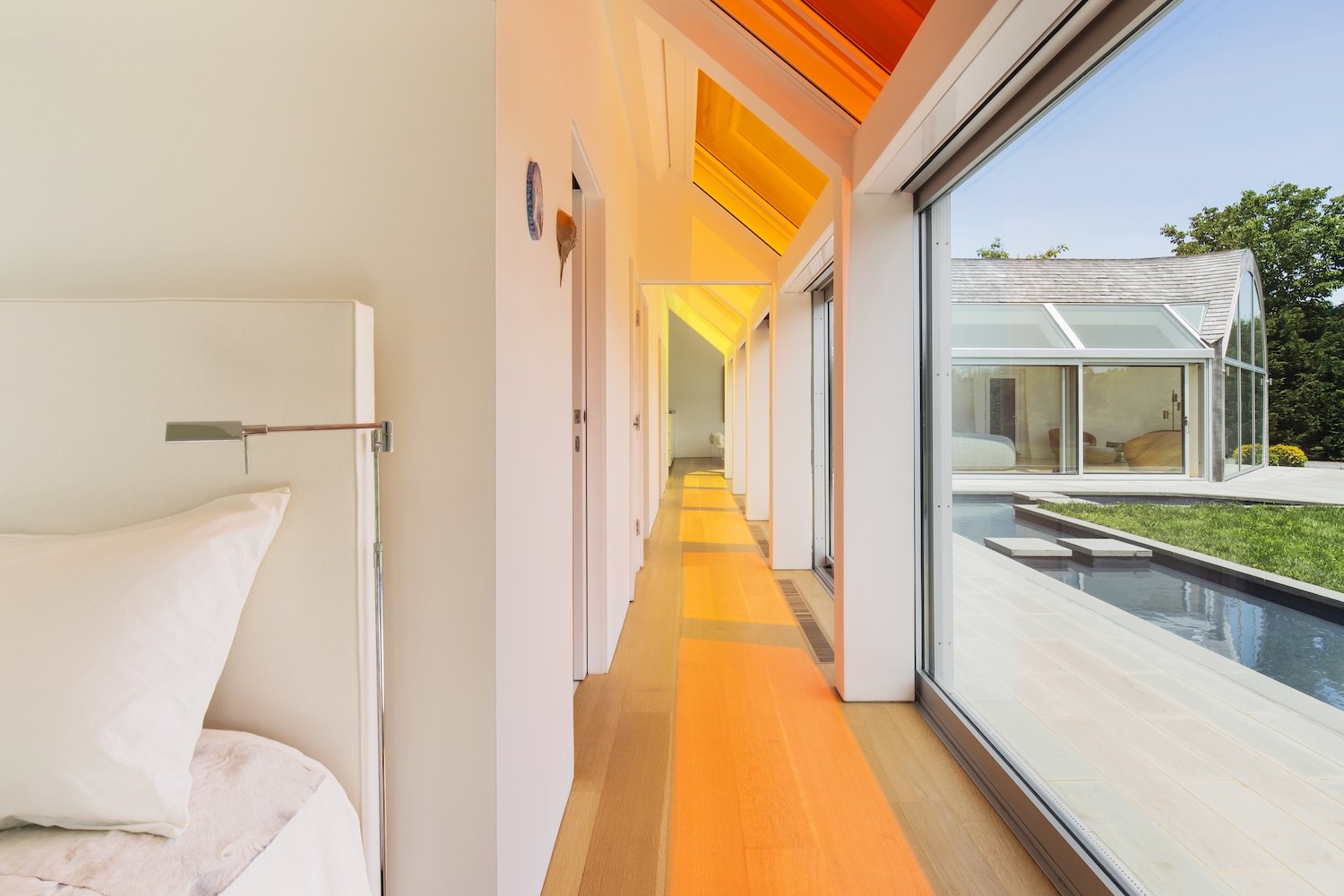
Courtesy of nea studio
The skylights were one of the starting points. I had this idea to mix passive house zero energy principles with design. You have the glass facade facing south, and an opaque, thick, curved wall facing north.
It sort of abides by Nordic traditions of building and architecture, which is about
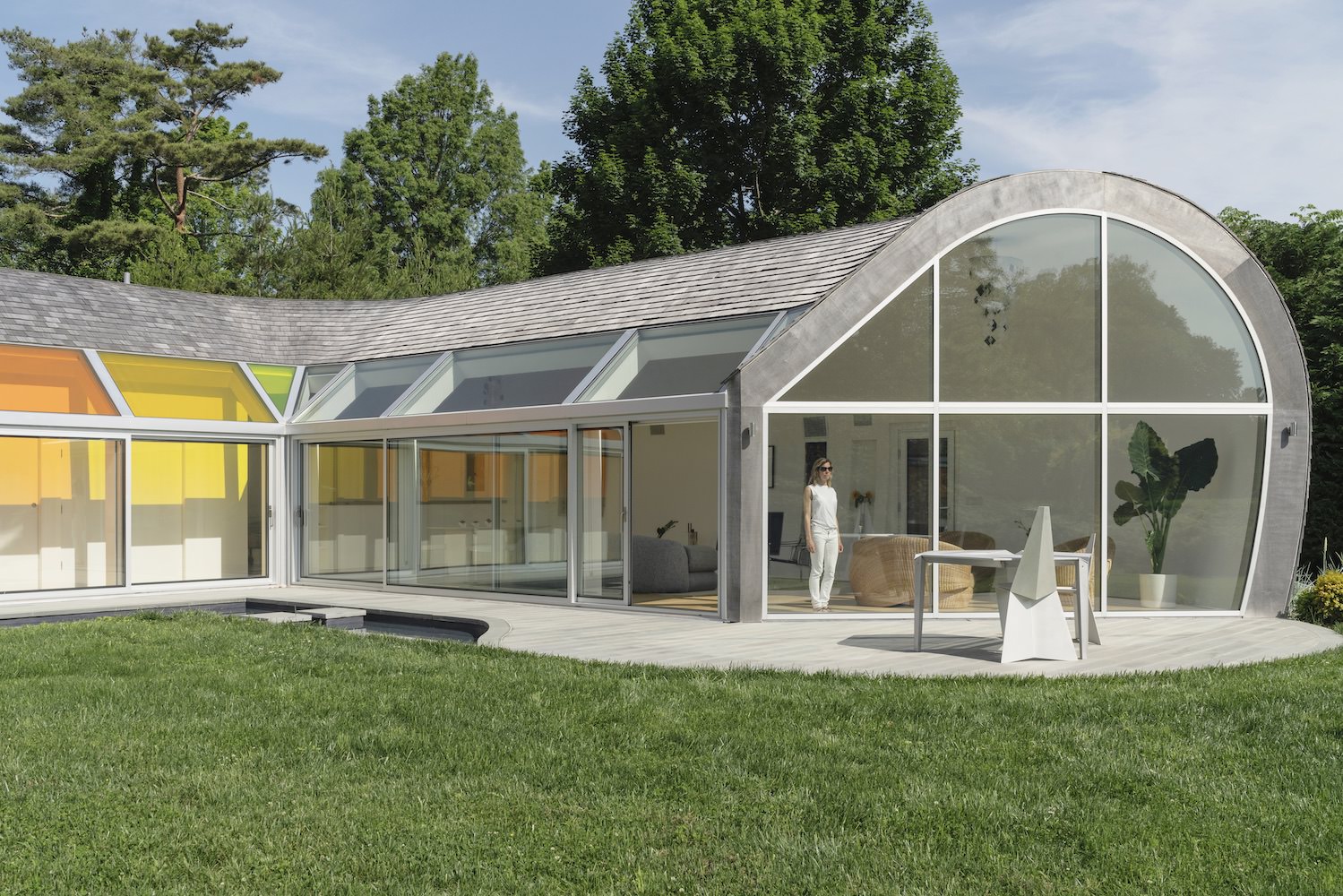
Courtesy of nea studio
small spaces and big nature. It’s really about enjoying the landscape and getting breezes to the facade that circulate through the house.
WW: You also designed much of the furniture and lighting for the space. What did you learn from that process that you’ll bring back to nea studio?
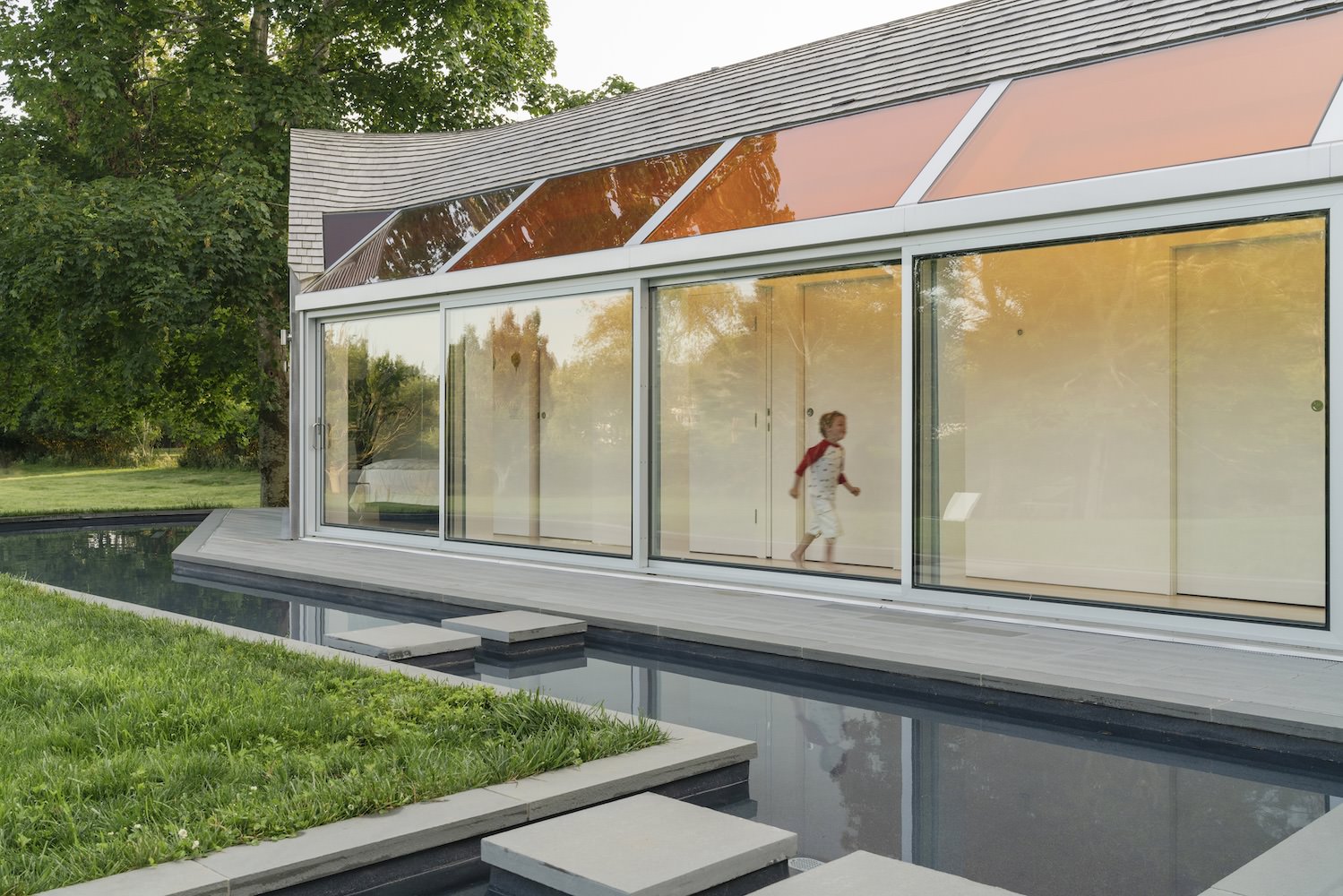
Courtesy of nea studio
NEA: It’s an opportunity to really explore the theme of the house, which is to connect with nature, and so the furniture is all inspired by organic shapes. One of the other points of the house sort of being driven by the site is that it’s using local crafts. And one of the traditional ways of building is to use cedar shingles, and they’ve known very well, for hundreds of years, how to double-curve shingles. It was important for me to always use the local to contrast with whatever global technologies are also integrated.
The seaweed lamp was a way of signaling the beach house. And the solar chandeliers have seashells, which are translucent just like the seaweed, but they’re organic and contrast with the voltaic modules that light up automatically at dusk. They also function as wind chimes, so when you open the sliding doors, it’s a multisensual stimulation.
It was about breaking down that boundary between inside and outside.
WW: Did you experiment with any new materials for Cocoon?
NEA: All the lighting products are a continuation of my dissertation research, which was on solar architecture and design.
Material research is a main part of what we do in the office. Like with the Beanie Sofa, filled with lentils, we made many scale models with different types of beans. It’s a lot of research and development behind each piece. It’s a lot of exploration of material with our own hands.
WW: It’s interesting that you mentioned sound with the chandelier and the curved wall. In design we think of how something looks and feels, but the sense of sound, the feeling of light—that is incredibly important to our experience of a room.
NEA: The whole point of the design is to get the multisensual—not just the visual, but the tactile and the auditory and as many senses involved as possible. The more senses you involve, the more you appreciate what’s around us.
WW: I know that sustainability in design especially has been a conversation for a long time. But have you kind of seen an uptick in interest in terms of clients that you’re working with?
NEA: Yes, I mean, everyone that I work with wants to be on the waitlist for the Tesla tile.
It’s amazing—we come to the house on Friday night, late, and the house is lit up by the solar generators. We don’t turn a light switch on. I come home from the beach, and it’s getting a little bit dark, there’s this beautiful, glowing warm light.
I think that more and more people will figure out how to light their indoor spaces that way. It’s solar as long as there’s a window—it’s doable.
WW: And you have this example, with Cocoon, that is beautiful. That you can create something beautiful that’s symbiotic with the environment.
NEA: Yeah, that’s the point. You can’t convince the world to be responsible for economic incentive alone. You really have to make them love it and be emotionally drawn.




